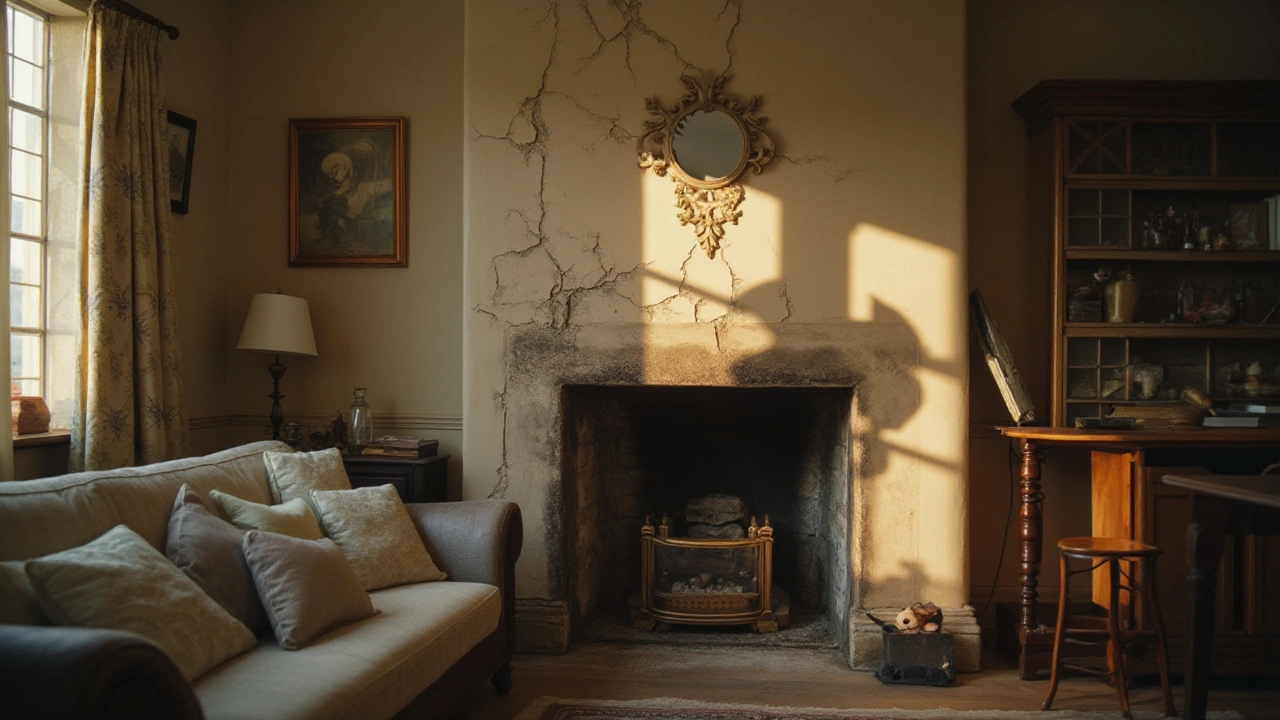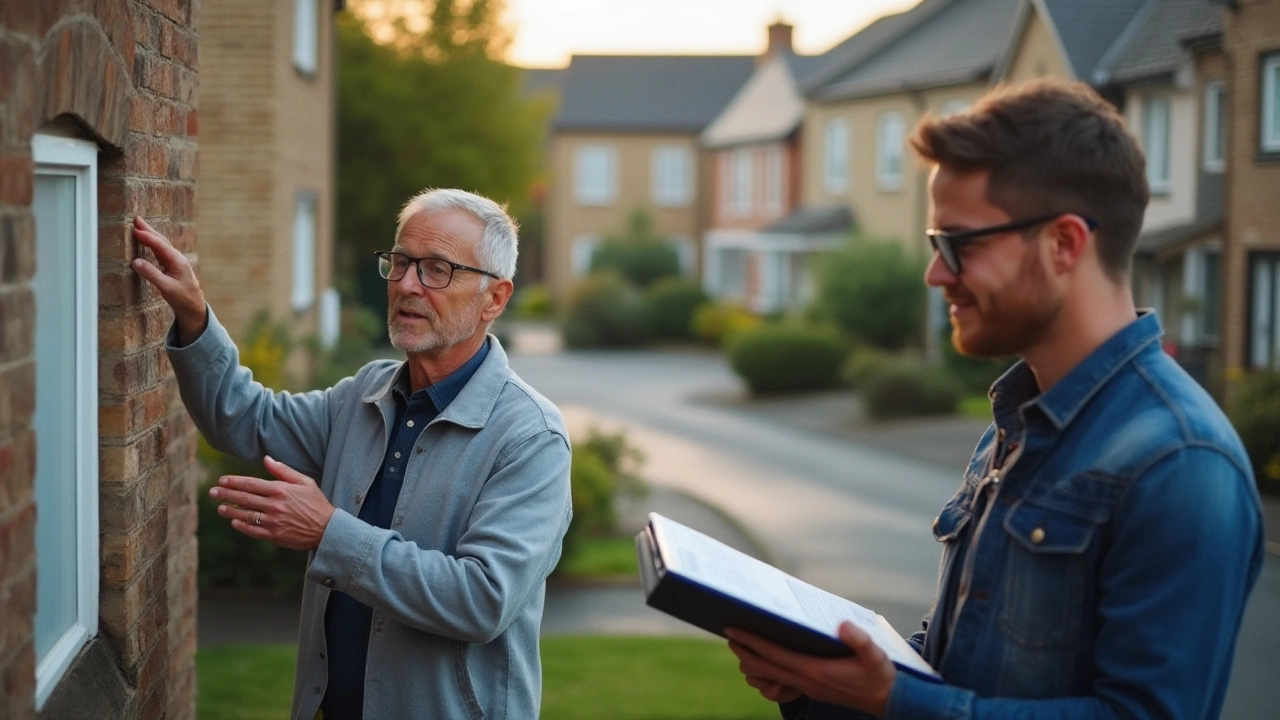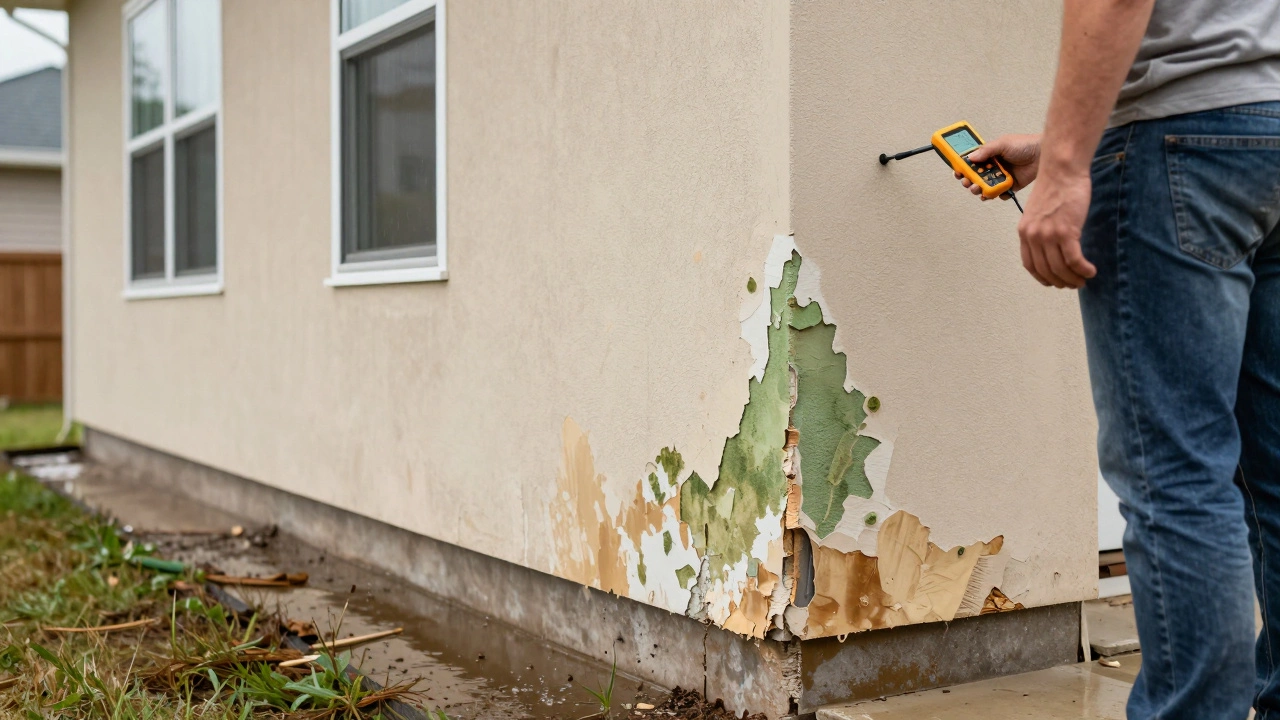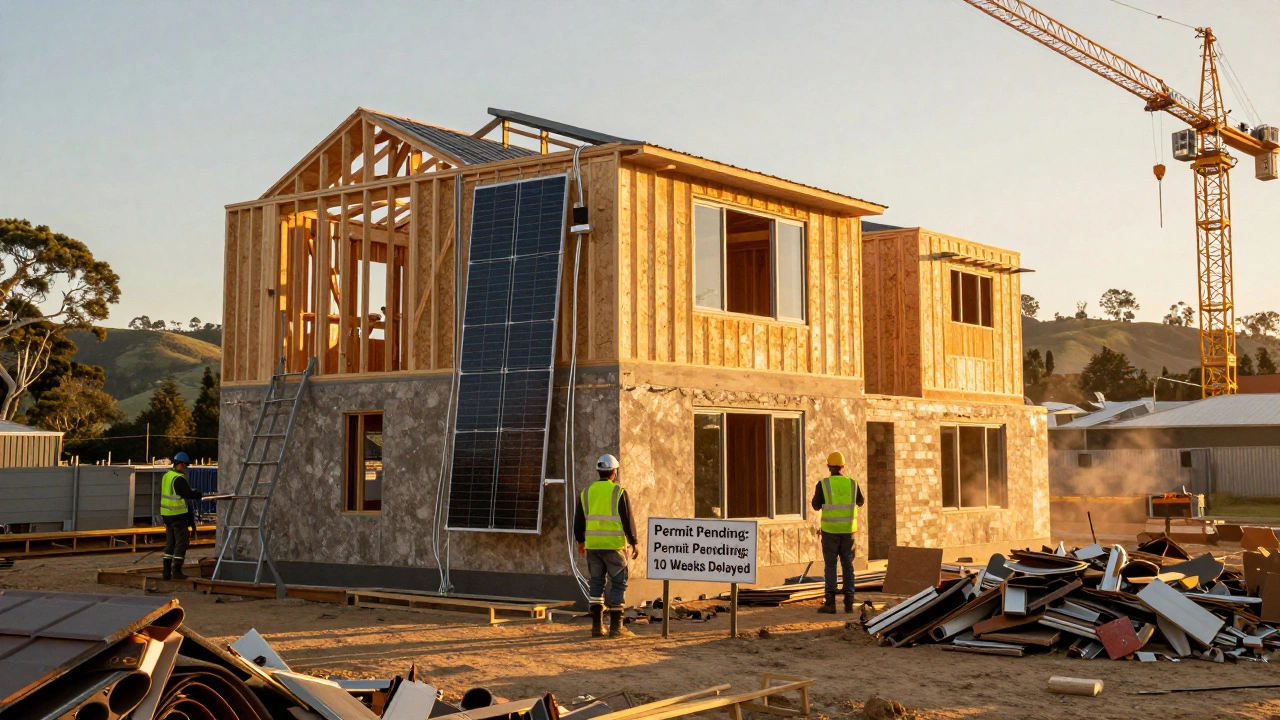Contemplating the thought of fixing your own house foundation can feel daunting, and rightfully so. It's a significant part of your home's structural integrity. Yet, sometimes the very nature of a homeowner's life is tackling the intimidating with a cautious yet adventurous spirit.
Before diving into the mechanics of foundation repair, it's crucial to grasp the fundamental signs indicating a problem. From cracks that snake up your walls to doors that no longer fit their frames properly, these signals often hint that it’s time to roll up your sleeves or call in reinforcements.
Fundamental to understanding foundation issues is knowing the typical culprits behind them. Often, it’s the result of water pooling around your home, settlement of soil, or even tree roots waging a subterranean war. Each cause might lead to different symptoms, and understanding these can help you decide which battles to fight on your own and which require professional reinvestment.
For the brave spirits who choose to dive into DIY repairs, minor issues like hairline cracks or slight settling can sometimes be tackled with the help of the right materials and resources. However, take caution—more extensive damage requires not just more profound repairs but the expertise that ensures your home remains safe.
Some situations, however, demand waving the white flag and consulting a professional contractor. The stakes are high, so knowing when to enlist help can make all the difference between a temporary fix and a lasting solution. Not only can this safeguard your home, but it can also bring peace of mind along with structural security.
- Recognizing Foundation Problems
- Common Causes of Foundation Damage
- DIY Fixes for Minor Foundation Issues
- When to Hire a Professional
Recognizing Foundation Problems
Identifying issues with your home's foundation early can save you a tremendous amount of time, effort, and money in the long run. One of the most apparent signs is the appearance of cracks in the walls. These can vary from small hairline cracks, which are usually harmless, to more severe jagged cracks that run wider than a quarter of an inch, which could signify deeper structural damage. It's not just walls that tell the tale; if you've noticed your flooring is uneven or sloping, this too might suggest an underlying foundation problem. Perhaps you've tried to open a door or window, only to find it sticks or refuses to open entirely—this is often an indication of misalignment caused by foundation shifts.
Pay close attention to your basement as well, where foundation issues often make their first subtle appearances. You might spot cracks along the floor or see signs of moisture infiltration, such as unexplained dampness or the ominous aroma of mildew. Structural issues can even lead to detached moldings, leaving gaps between the trim and ceiling or floor, showing the foundation's shifts from its original position. No less important are the external signs, often more visible from a glance outside. For instance, look for any bulging sections or tilting walls, both of which could be clues indicating that your foundation is under stress and possibly moving.
Even chimneys have their stories. If yours seems to be leaning precariously or separating from the house, it's often a warning sign of deeper foundation challenges. While these might seem straightforward, often homeowners overlook them until they compound into larger, more expensive repairs. According to a leading expert in structural engineering, "A home speaks to you; by observing the signs closely, you can catch a problem before it demands significant intervention."
Understanding these signs allows you to take early steps in repairing minor issues before they escalate into daunting repair jobs.
Not only can recognizing these signs help prevent further damage, but it can also increase the longevity and value of your property. As a homeowner, it's essential to keep an eye on even the smallest of changes within your home, maintaining a vigilant awareness is your first line of defense. Once you've recognized the signs, documenting them through photographs and notes is an excellent idea, providing valuable information should you decide to consult a professional later. Remember, proactive awareness can make an immense difference in the upkeep of your home foundation.
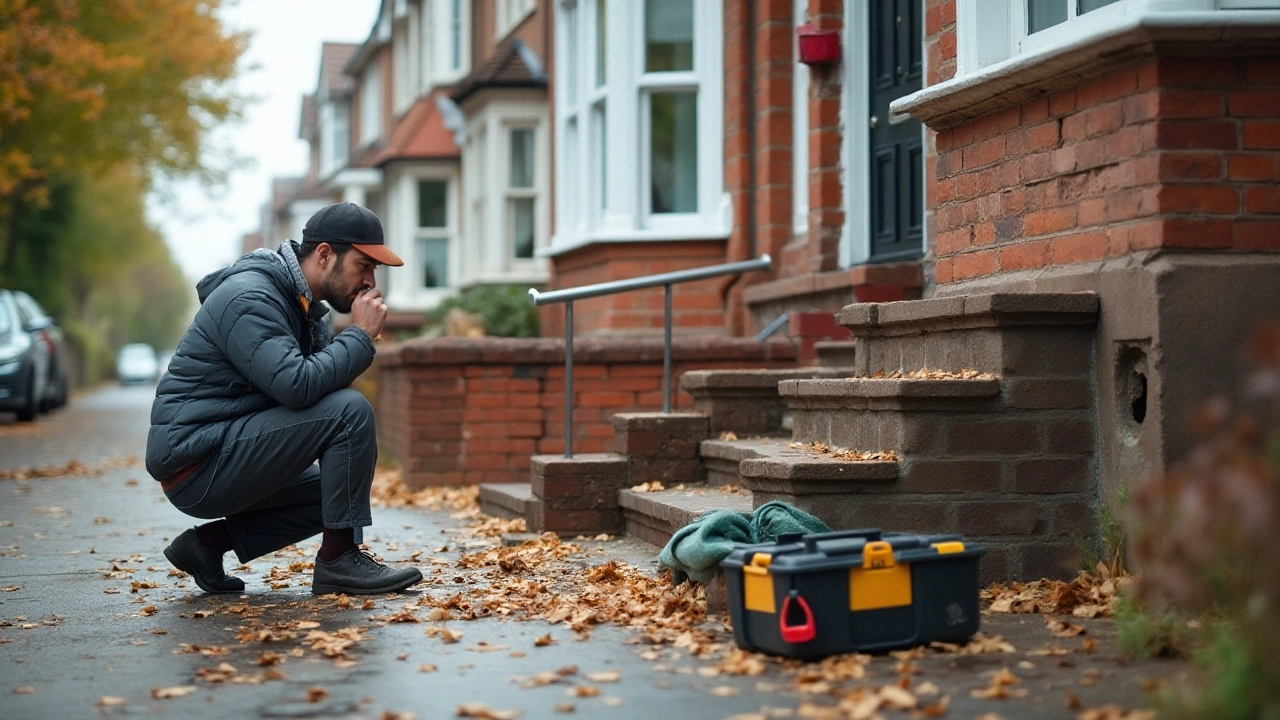
Common Causes of Foundation Damage
Understanding the nuances behind foundation damage can feel like piecing together a vast and complicated puzzle, where every piece sheds a light on the significance of proper home maintenance. Many might think that such damage is a rare occurrence, but truth be told, there are several factors that can wear down or outrightly disturb the stability of a home. Primarily, water plays a recurrent villain role. Whether it’s too much of it or the sheer absence, both can wreak havoc on a structural foundation. For instance, when soil expands due to excessive moisture, it can push against your home’s walls. Conversely, during dry spells, soil contraction creates voids, leading to unsettling. These shifting grounds result in negative impacts on your home foundation.
Apart from water, tree roots often find themselves accused of mischievous acts beyond our sightline. These roots, in search of nutrients and moisture, meander innocuously beneath your property but often at the expense of distorting or cracking the very base of your home. This risk escalates especially with larger and older trees planted too close to the house—a mistake many homeowners make during the whimsical planning of garden foliage. Addressing this involves either repositioning the garden floral body or finding means to prevent roots from extending under the house.
"The integrity of a home rests quite literally on where it stands, and slopes or unstable grounds can act as silent saboteurs if not carefully assessed," says Mary Williams, a structural engineer with over two decades of expertise in the field.
Soil type, an often overlooked factor, can delight or doom your house. Not all soil is created equal, and specific types, like clay, expand and contract more than sandy bases. This means homes built over such turf are more vulnerable. Weather events, too, cannot be underestimated. From tornadoes with their violent winds to silent quakes beneath the earth, nature sometimes flexes its muscles, resulting in the shifting of ground underneath. Monitoring weather and climate patterns turns from mundane to crucial to get ahead of any potential problems.
Equally important to consider is human error during the initial construction phase. Lack of foresight or knowledge results in improper grading or even using sub-par materials that don’t stand the test of time. Often, a hasty build skips thorough evaluations of the soil and potential environmental contributions to future damage. It's imperative that a robust inspection of every structural element, from soil care to material choice, be conducted. Table presents some typical causes and their links to particular damages.
| Cause | Potential Damage |
|---|---|
| Water Pooling | Foundation heave or cracking |
| Tree Roots | Cracks and destabilization |
| Improper Grading | Water accumulation near foundation |
Awareness is the first line of defense any homeowner has against the looming threats to their abode’s solid ground. As we unravel the causes, strategic steps to mitigate risk can securely root the foundation, maintaining the peace and safety of your home sanctuary.
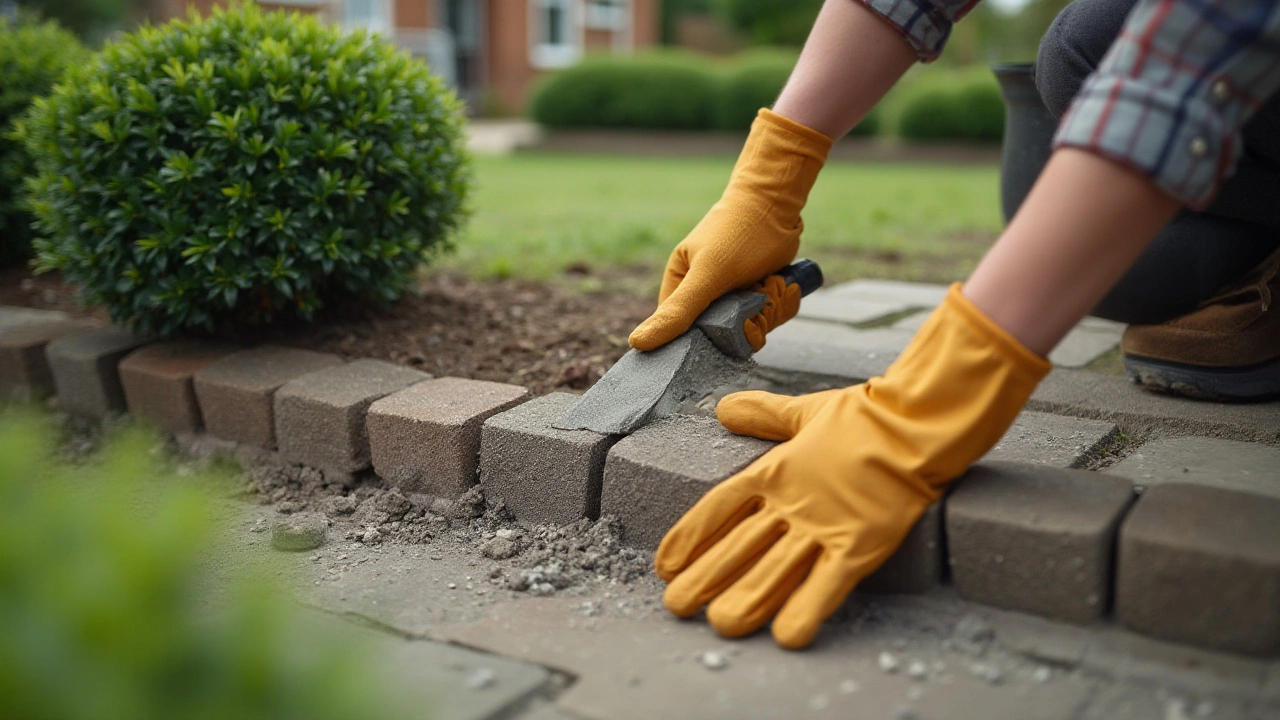
DIY Fixes for Minor Foundation Issues
Tackling DIY foundation repair projects can seem intimidating, yet with the right approach, it becomes an educational dive into the heart of home maintenance. When dealing with minor issues, such as hairline cracks or slight settlement, homeowners can often manage these fixes with ease. It's crucial to first assess the extent of the damage. Smaller cracks, usually less than a quarter-inch wide, rarely pose a structural threat but do warrant attention due to potential water penetration or pest access. One of the accessible solutions is to fill these cracks using epoxy injections or polyurethane foam. This not only stabilizes the area but also waterproofs it, deterring further damage. Always ensure the cracks are clean—free of debris and dust—before attempting any repairs to guarantee the best adhesion.
Before jumping into repairs, understanding the tools needed can make the process much smoother. Typically, you'll need basic tools such as a chisel for widening any larger cracks to prepare them for filling, and a caulking gun for applying sealants precisely. Given that some products expand as they cure, it's crucial to follow manufacturer's guidelines to avoid mess or inadequacy. The repair timeline shouldn't be underestimated; curing periods can vary, and patience becomes a virtue that ensures long-lasting results. Don’t rush the curing process; let nature take its course. Temperature and humidity may also affect drying times, so being aware of these environmental factors can help greatly.
If your home is on a foundation that's experienced slight settling, a common approach is to use steel shims or concrete piers to level the structure. This method involves placing these supportive elements beneath beams to redistribute weight and bring balance back to your home. Here, due diligence in measuring and leveling is required to prevent overcompensation, which might stress other areas. Remember, the aim of the repair is stabilization, not stress introduction. For this sort of task, enlisting a second set of eyes or hands rarely goes amiss. Collaboration can illuminate angles or details overlooked in the solo effort. A small evening invested in leveling not only assures greater structural synergy but enhances your understanding of your home's framework.
"While not every foundation crack signals doom, addressing them promptly ensures serenity and savings," emphasizes Tom Silva, a veteran builder and television personality known for his expertise in home improvements.
For the green-thumbed among us, landscape management acts as a passive solution to prevent future foundation issues. Correctly grading your property encourages water to flow away from your home rather than pooling around your foundation. Additionally, strategically planting trees at a safe distance minimizes root intrusion, which could exacerbate settlement. Advancing your gardening aims particularly towards species with less aggressive root systems can be part of a balanced home maintenance routine, merging aesthetics and protection. This way, your yard not only remains a well-tended sanctuary but acts as a frontline defense against potential structural threats. The dividends pay forward in preserving both the beauty and fortitude of your dwelling.
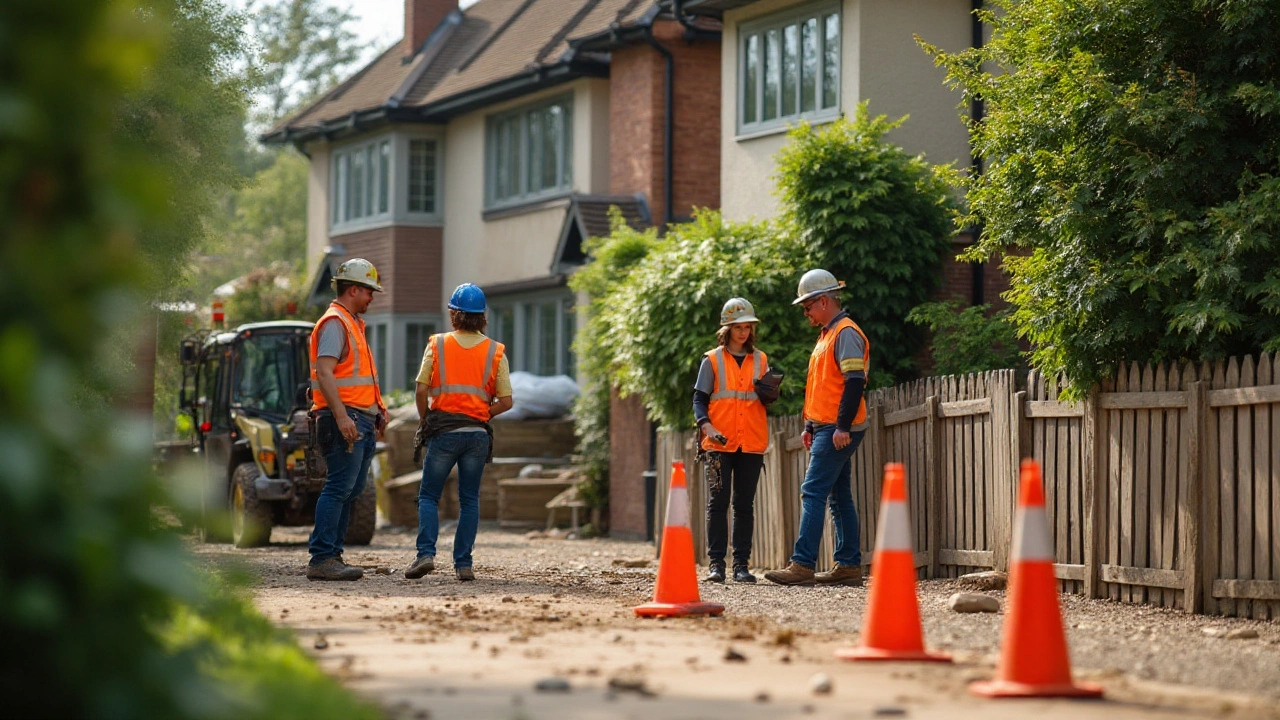
When to Hire a Professional
The decision to bring in a professional for foundation repair can be daunting, yet in many cases, it's the most prudent step. Home foundations are the literal bedrock upon which all else rests, both practically and metaphorically. When the signs of damage escalate beyond minor annoyances—like hairline cracks or slightly creaky floorboards—to significant indicators such as large gaping cracks through walls or floors, doors that refuse to close or open, and windows that are perpetually jammed, it’s crucial to consider professional intervention. These are not just signs of superficial wear; they are red flags indicating potential threats to your home's structural integrity. Attempting to shoulder substantial repairs without expertise could lead to more harm than good, possibly escalating both the problem and costs in ways that one doesn’t plan for.
Another critical aspect to consider is the cause behind your foundation's woes. For instance, homes set upon clay soils often battle with the rhythmic expansion and contraction caused by moisture changes. In such scenarios, standard DIY fixes are rarely adequate. Foundation repairs in clay-rich environments benefit greatly from a professional touch because these experts understand how to tackle both the cause and the symptom. In some cases, special piers or underpinning may be required to stabilize the foundation adequately. These are techniques that demand not only specialized tools but also expertise—both typically beyond the realm of DIY capabilities.
Professionals can offer warranty-backed solutions, something that cannot be overstated. Engaging licensed contractors provides you with peace of mind, knowing that the work comes with a level of guaranteed corrective action should future problems arise. A diligent contractor will not only address the initial problem but will often provide an analysis of other potential risks, helping preempt future issues. If the stakes weren't high enough, the potential legal issues arising from improperly handled repairs—such as decreased property value or disputes during home sales—add weight to the choice of professional foundation repair.
"Foundation issues are nothing to take lightly. A minor problem can be the harbinger of costly damage," states Robert Jenkins, a leading structural engineer. "Professional insight doesn't just save money. It safeguards the very essence of home: safety."
In instances where your home insurance might cover foundation issues, having a professional assessment can also aid the process, as insurers are often more reassured by a specialist's diagnosis than a homeowner's appraisal. Documenting the issue properly with the help of an expert can pave the way for smoother claims. Moreover, understanding when to surrender to professional insight speaks volumes of one’s commitment to preserving the sanctity and security of their dwelling. Bringing professionals on board isn't just about surrendering; it's about recognizing the limitations one might have and employing the wisdom of experience to lead the way.

